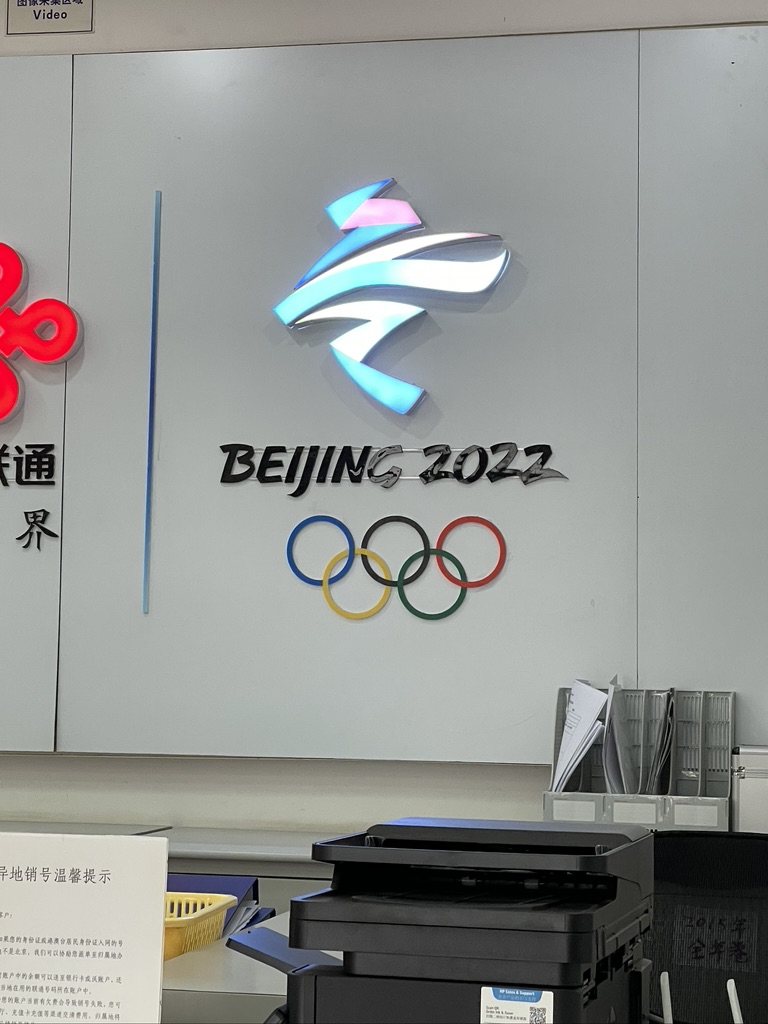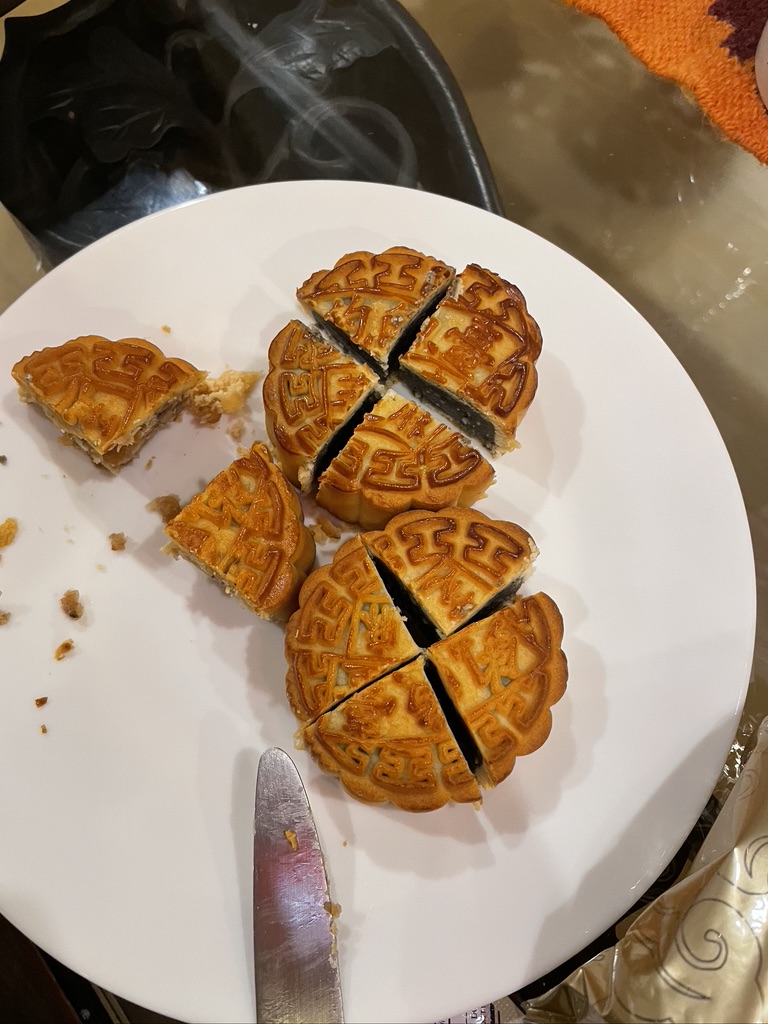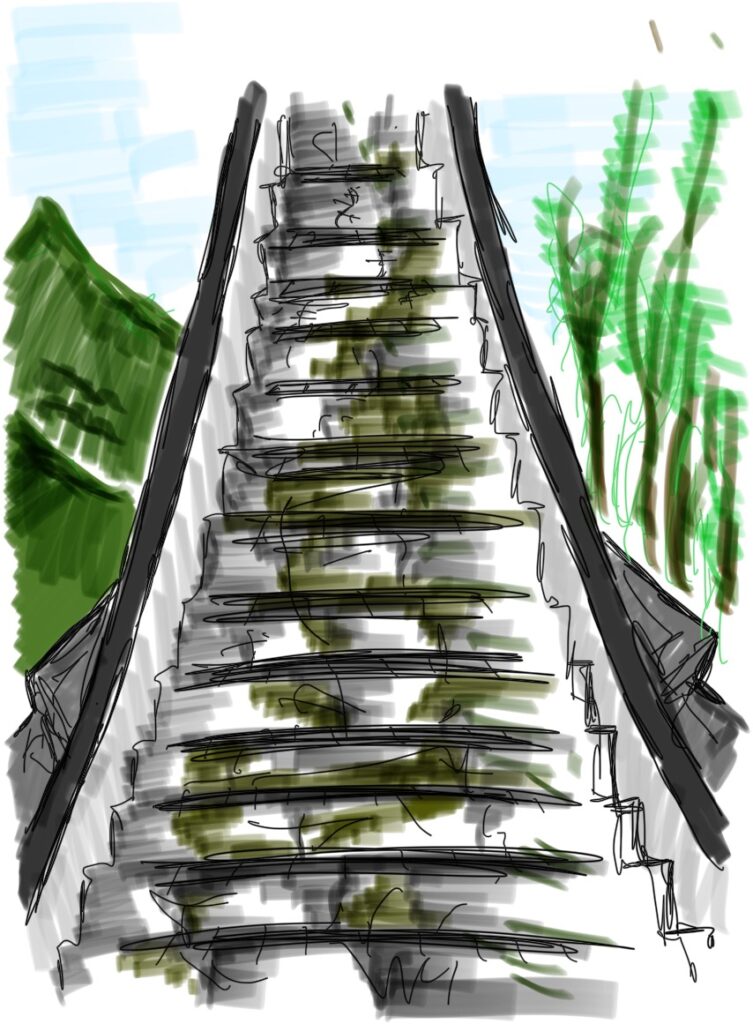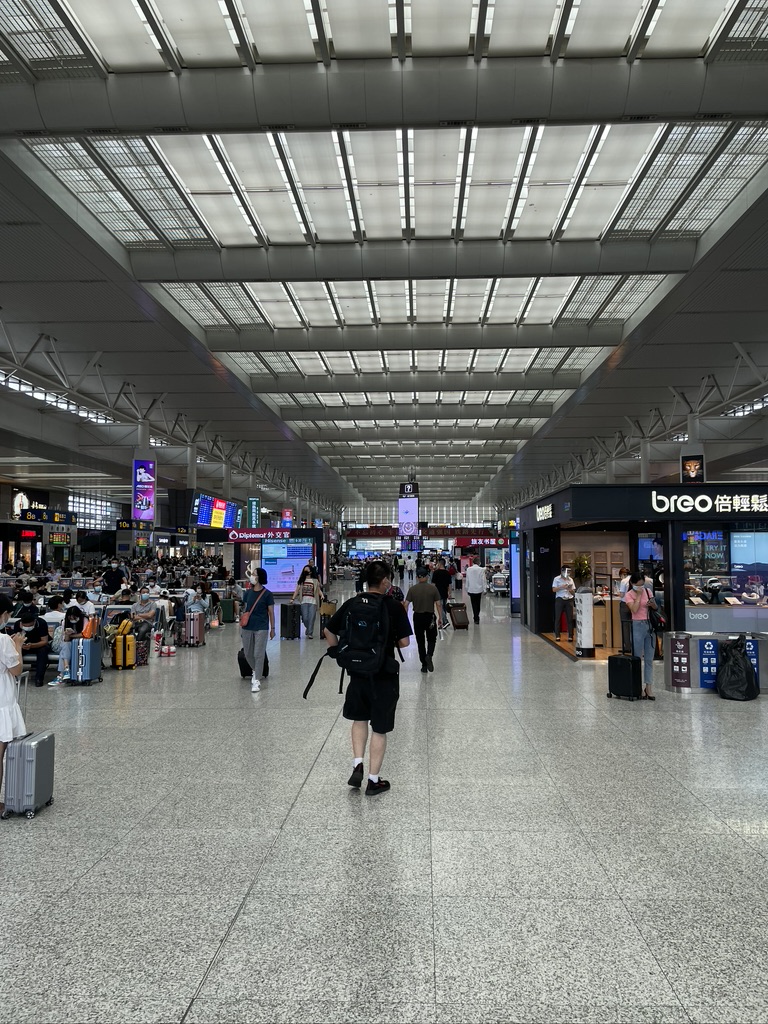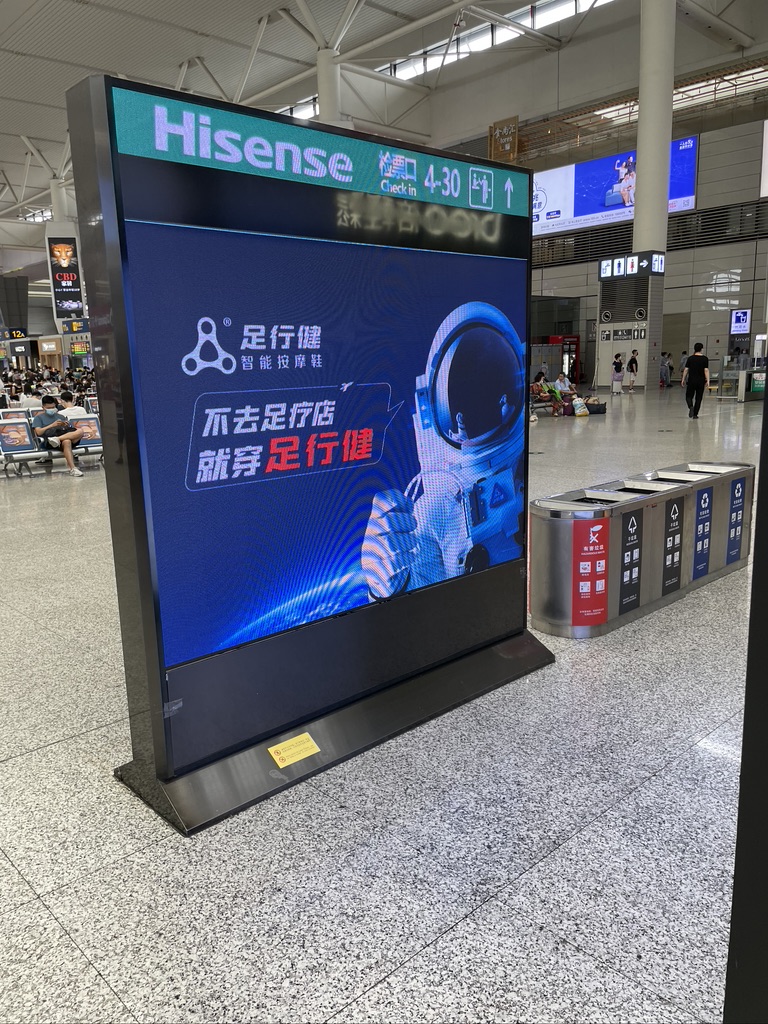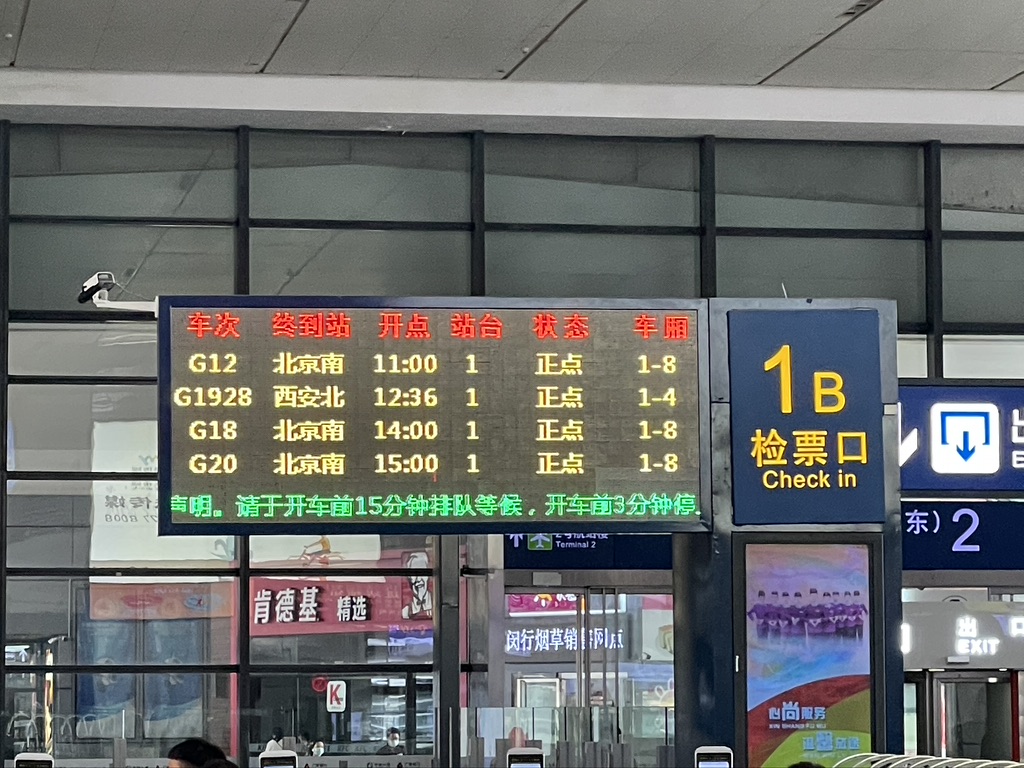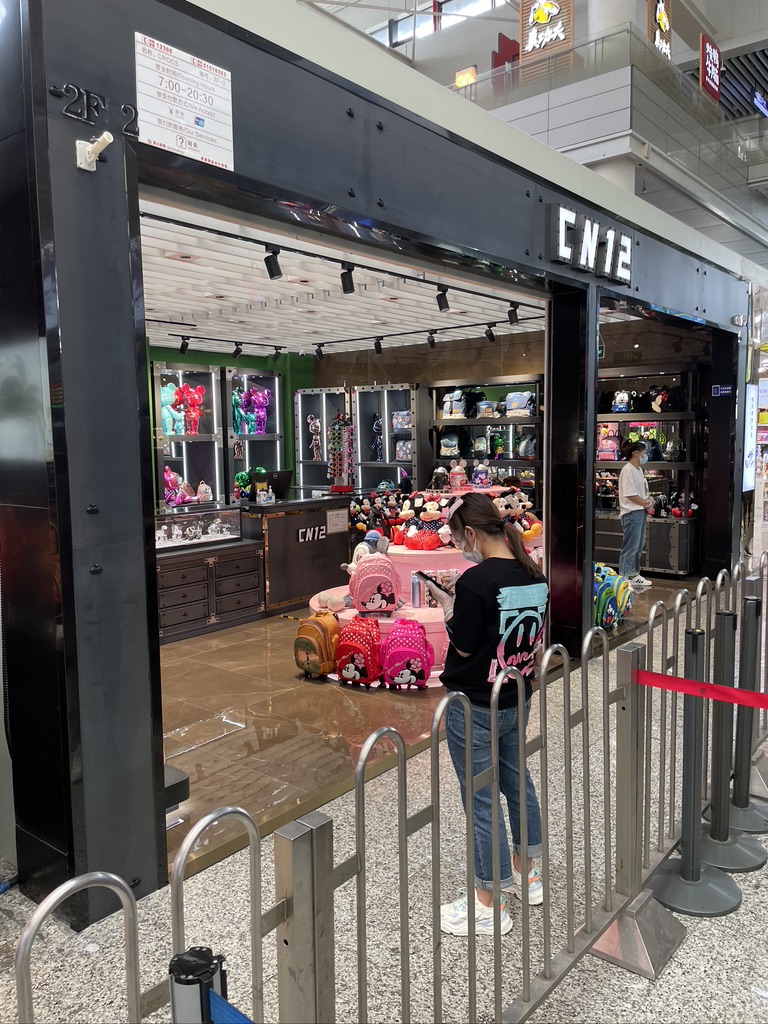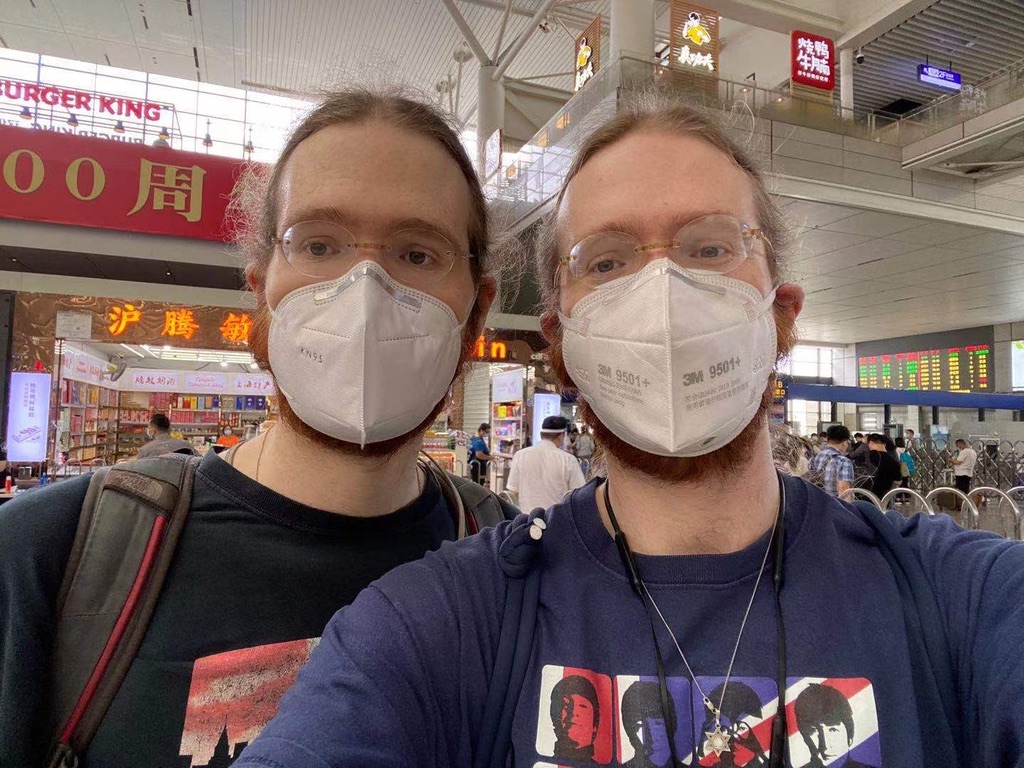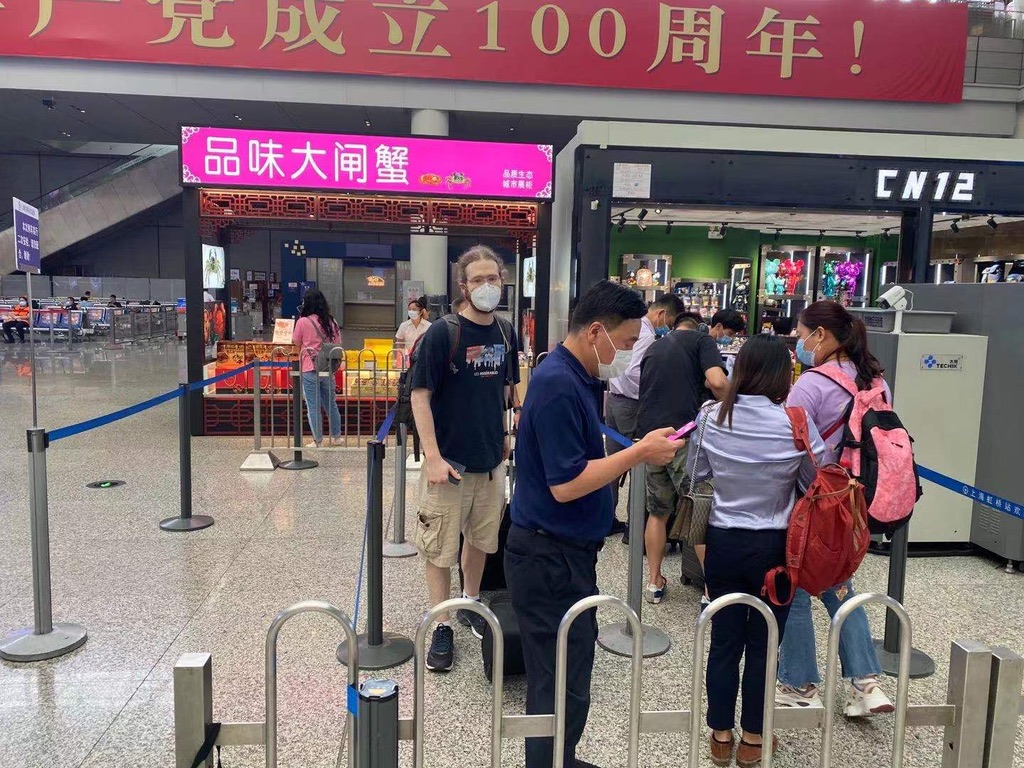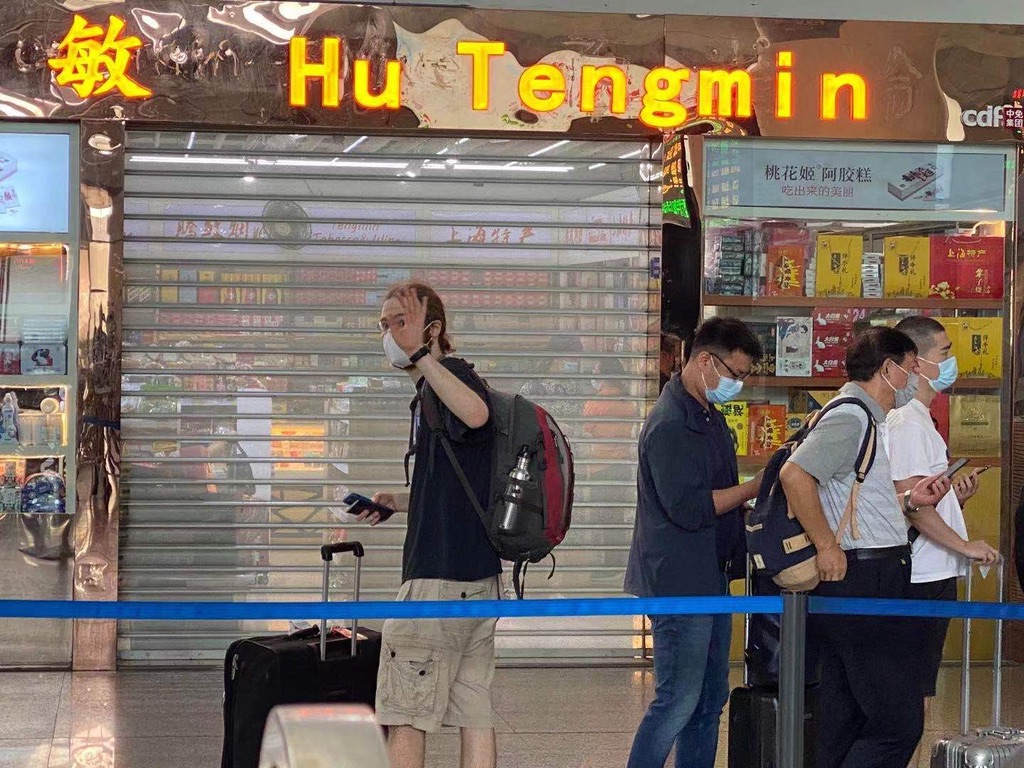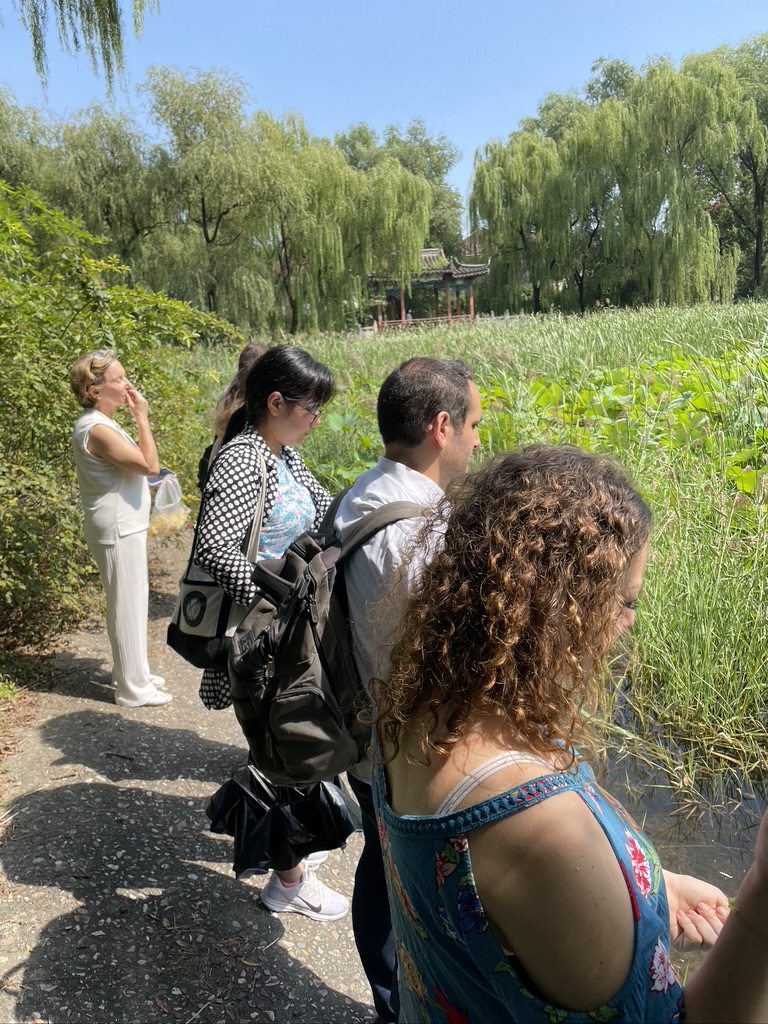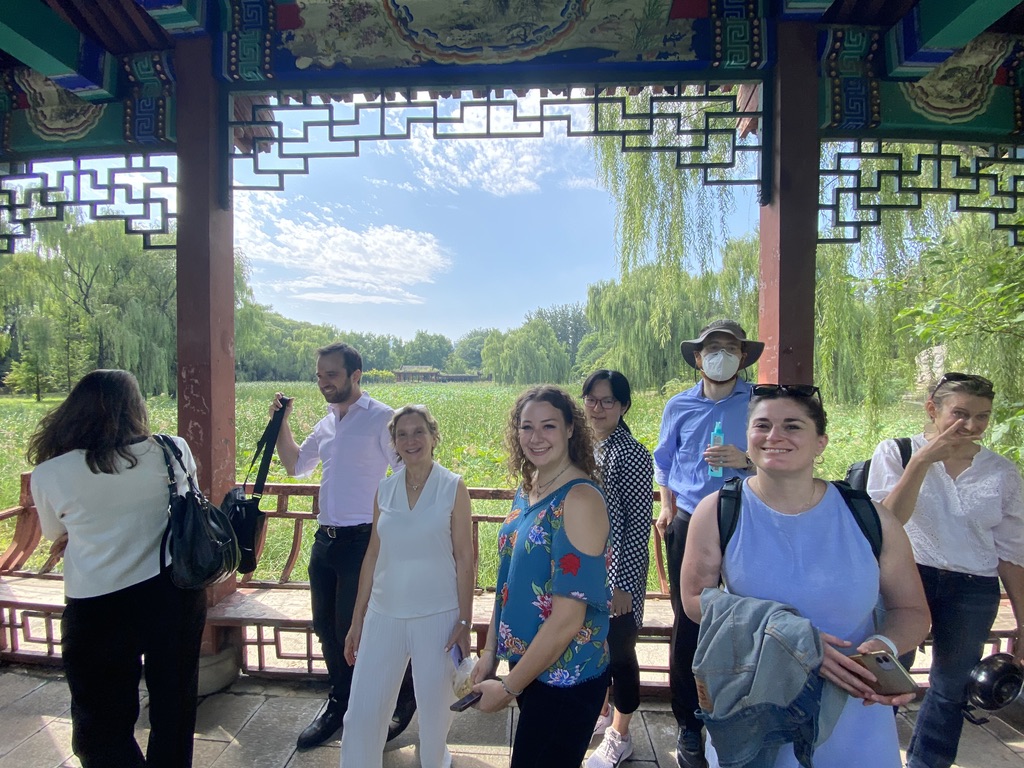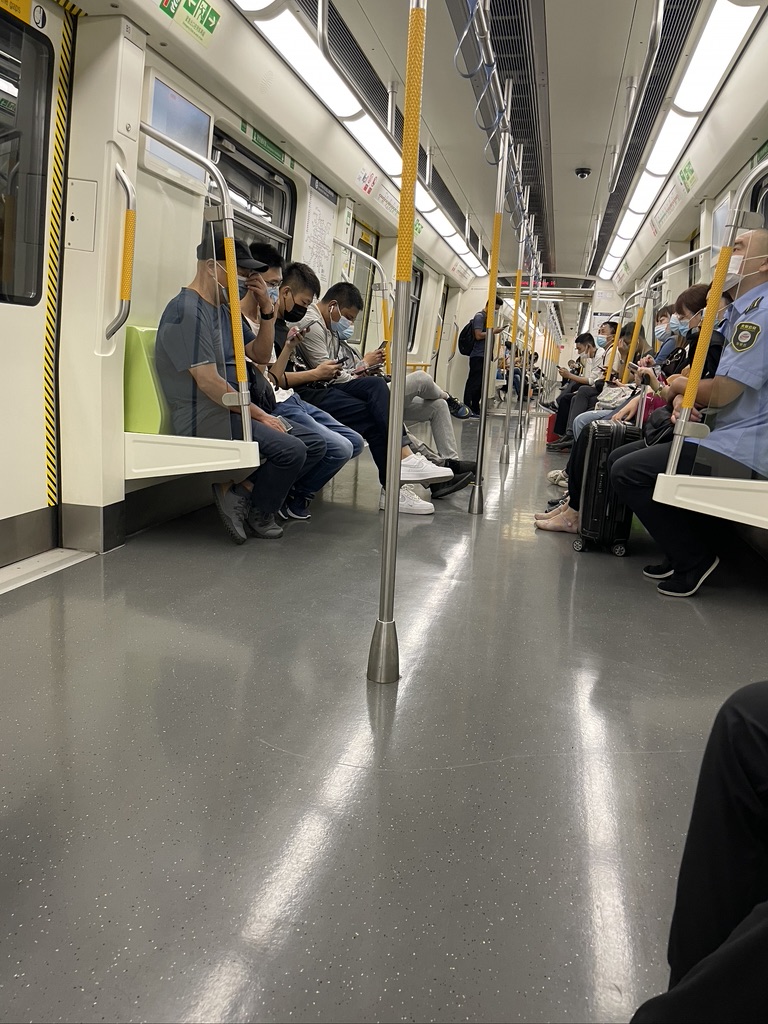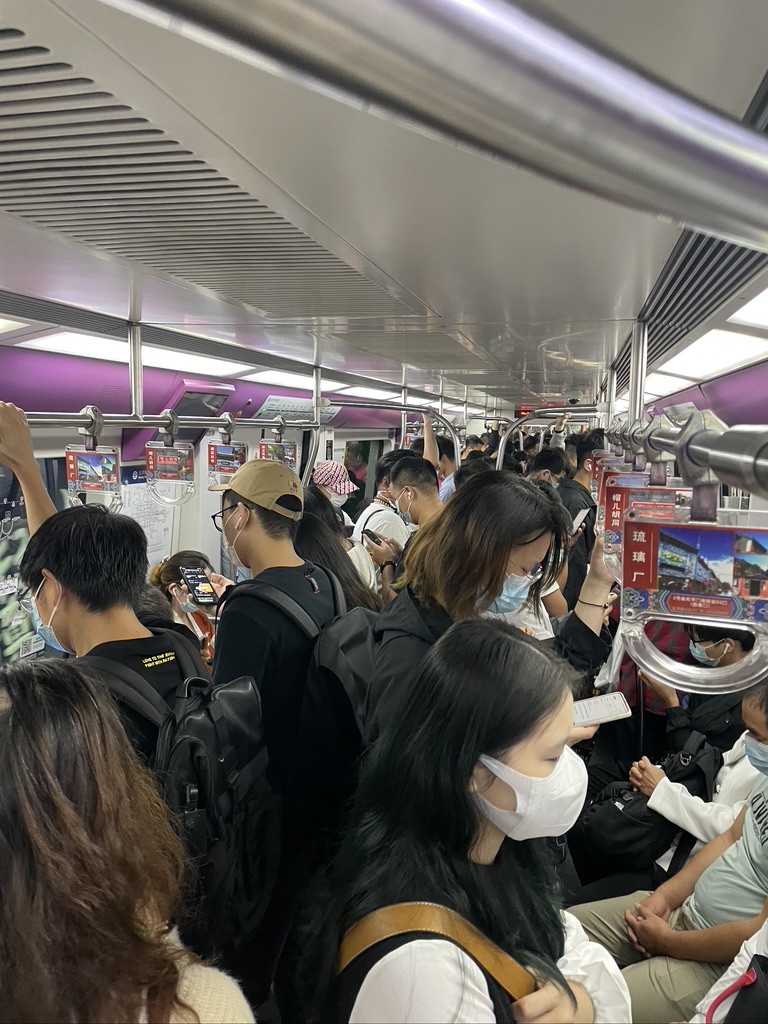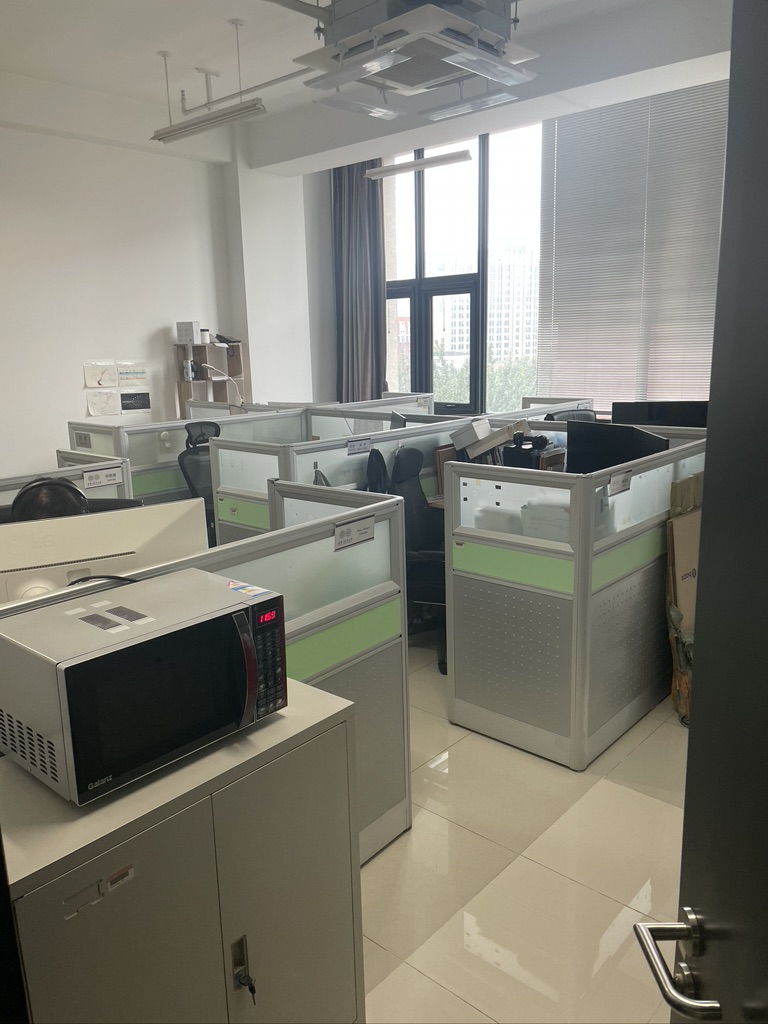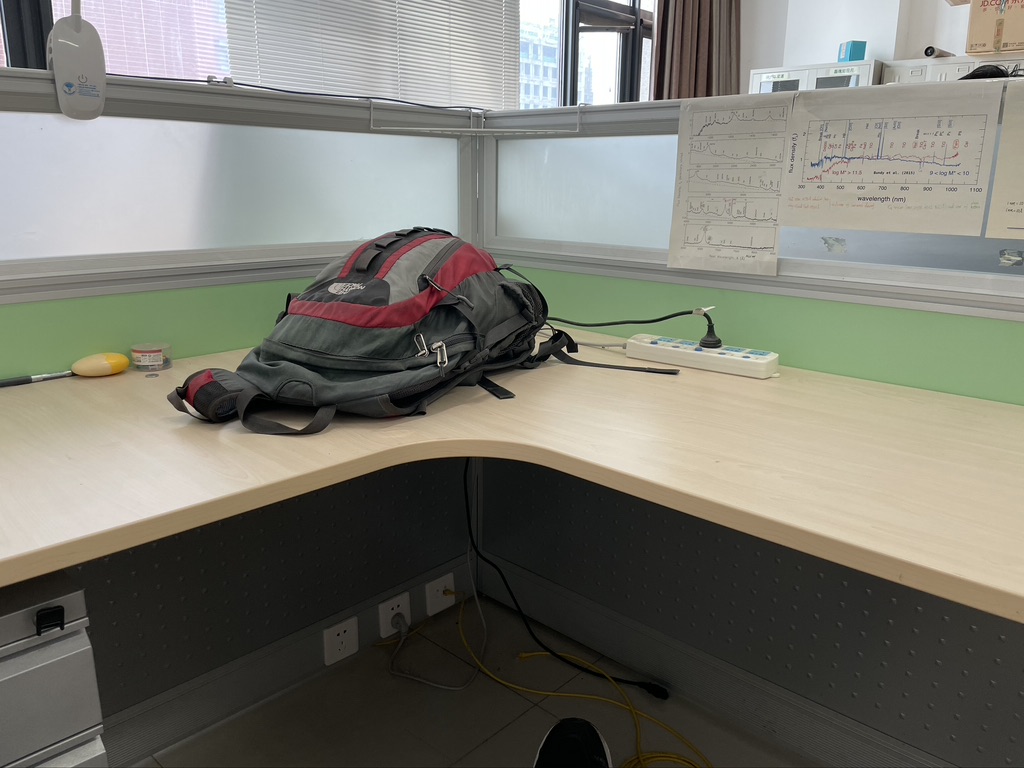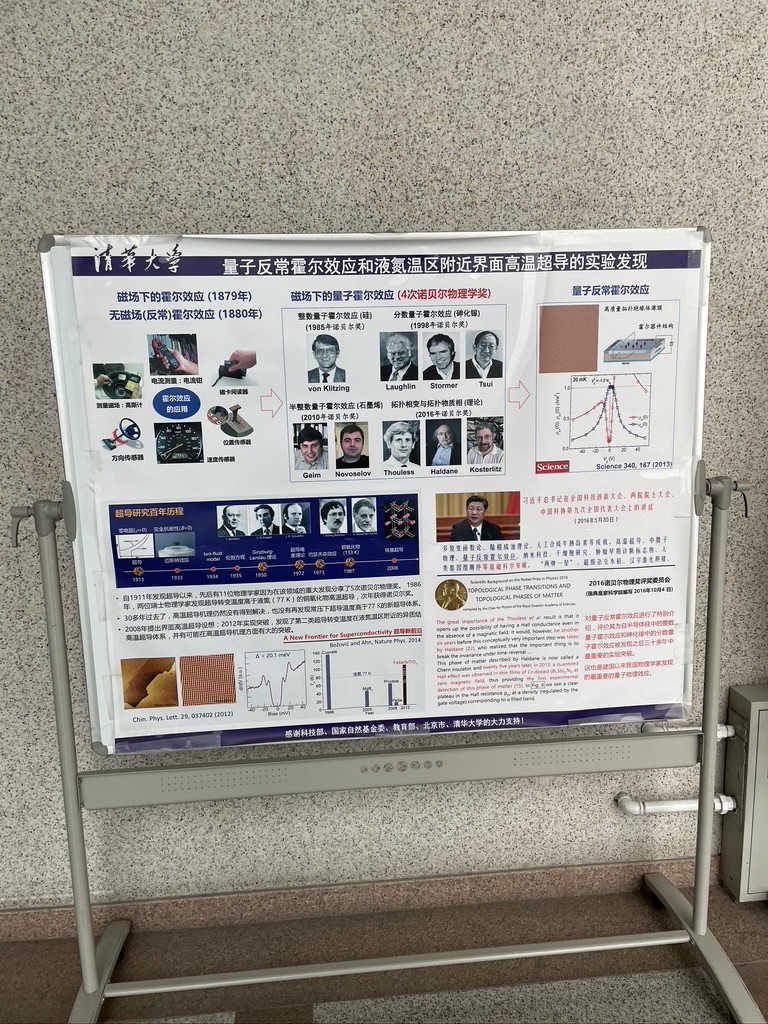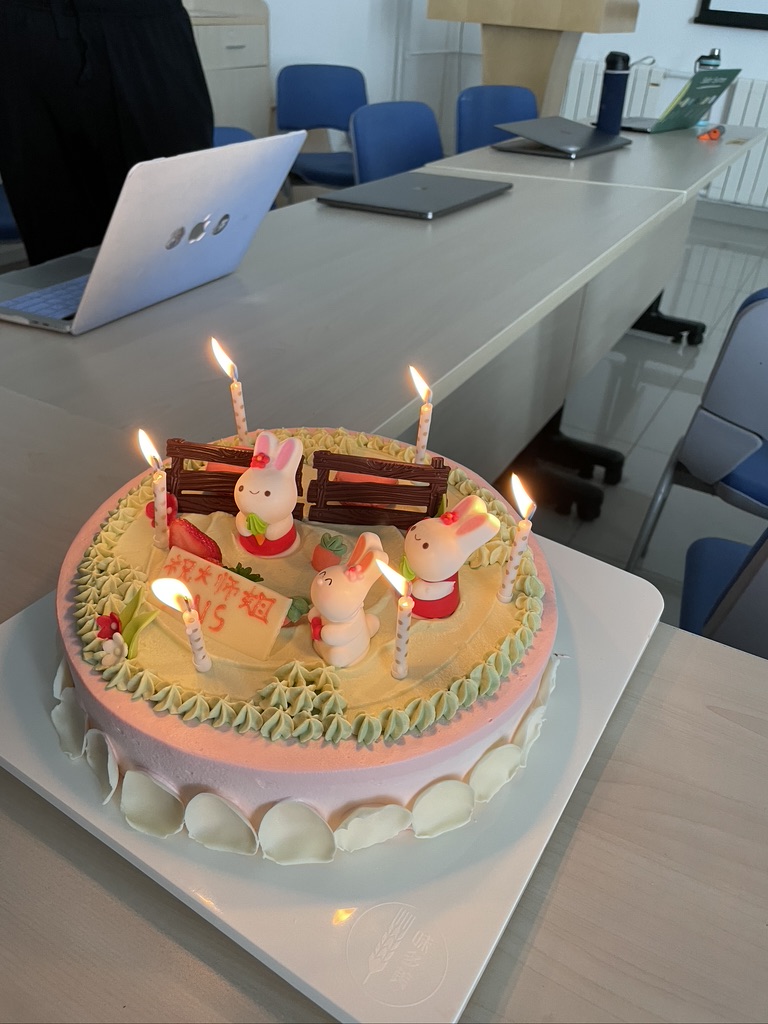Hello Everyone,
Thank you so much for returning to Astronomer in Beijing to read more about my time here in Beijing. I hope you’re all doing well and staying safe and healthy! As fall begins to set in here, I’ve been getting a lot of messages about COVID booster shots, flu shots, and making sure that everyone is staying healthy. I just got my flu shot this week (it’s really useful to know someone who runs an English language hospital – thank you so much for all of your help, Roberta!!!) and am hoping to get my COVID booster/the Chinese vaccine some time in November (Since I’m a foreigner, I don’t yet qualify for the Chinese booster, but since I haven’t received any of the Chinese vaccine, I am eligible). This is the first post of the now monthly format (there still will be some surprise special posts, but for the most part, the blog will be monthly). Again, if you’re reading this and you haven’t subscribed yet, I hope you’ll consider doing so. The link is on the right hand side of this page.



















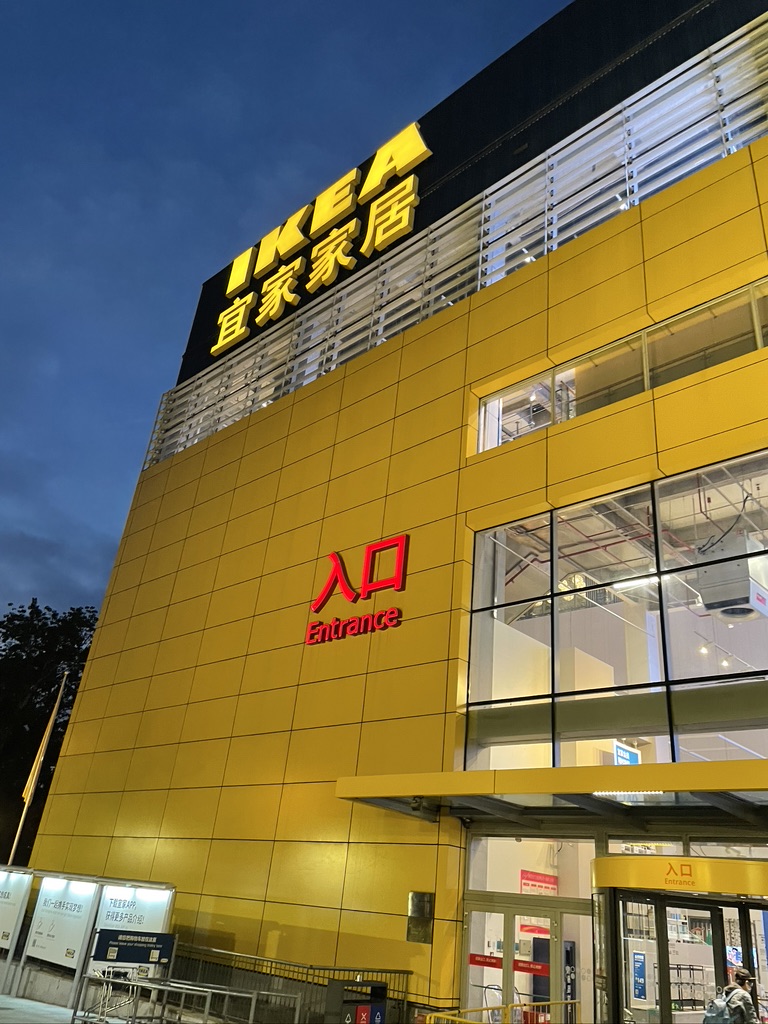
Before I dive into what I did in October, I promised last week I’d share some more photos of my apartment now that it’s starting to come together. As I mentioned before, I brought a fair amount of keepsakes from the US and from my various travels, so you might recognize a few things. I really like my apartment so far. I’m still trying to figure out the ideal setting for the floor heating, but I did get a water filter installed (Yay drinkable water!), and have been able to buy a number of things on baopals and taobao to help make my apartment feel like my home. I do want to thank Roberta & Ted again for all of their hospitality, and also for letting me borrow bedding and cutlery so that I didn’t need to spend my first day in the apartment figuring out where to buy plates and forks. I also did take a trip to the IKEA superstore here in Beijing and wow was I blown away. I’ve never been to an IKEA in the US, so maybe they’re all enormous, but I’ve never seen so much stuff (and thankfully all of it has English descriptions and they took my credit card!!).
Happy Halloween!!








Before I tell you all about my month, I want to wish everyone a Happy Halloween! I don’t know what the status of trick or treating is this year (or Halloween parties for that matter), but I’m sure that CVS and your local supermarket are full of Halloween candy. Well, obviously, Halloween is a super American Holiday and isn’t really celebrated here in China. However, as I’ve shown previously, the influence of America is ever present and the Jack O’Lanterns are out and about here in Beijing. Now, with the exception of the display at the Beijing United Family Hospital, all of these are at foreign import stores, so the target audience is definitely the Americans. Although I didn’t buy a pumpkin or any decorations, I did get some of the chocolates to celebrate. However, I did see a number of advertisements for Halloween celebrations here in Beijing and some kids in costume (including a very cute looking Harry Potter), so there will be some celebrations (even if I’m not doing anything).


Additionally, we had a small Halloween celebration at Kehillat Beijing as part of our “Challah”ween Shabbat (we have a themed dinner every week, see the section below for details). As part of the early celebration, one of the community members carved this amazing constellation Jack O’Lantern! I thought it was amazing and wanted to share it with you!
Exploring Gulou!
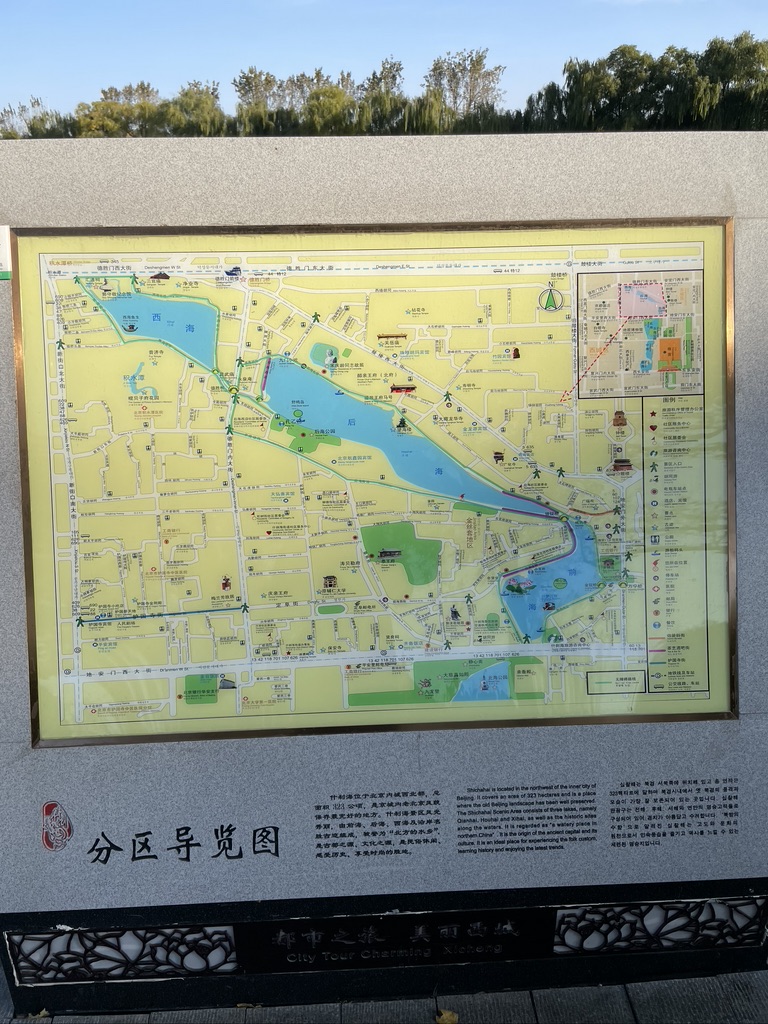
One of the reasons that I wanted to move into my apartment at the beginning of October is that the first week in October is the National Day Holiday, which commemorates the founding of modern China. As such, I had an entire week where I could work from home (and thus get things set up in my apartment). An added benefit of working from home during this week was that I also got to explore my new home base! As many of you know, I really enjoy running and I knew I needed to find a running route to really feel like I live in a Gulou. In looking at Apple Maps, I immediately was drawn to the Shichahai area of Gulou (see the map to the right), which is about 10 minutes from my apartment. When I was in Boston, my favorite place to run was the Chestnut Hill Reservoir right by Boston College and Shichahai is known for its three large lakes and multiple temples that surround those lakes. Although I haven’t visited the temples yet, I have had the opportunity to run around the lakes at least twice a week (the one nearest me and the one that is featured most in these photos is HouHai). As you can see, the landscape is amazing! Much like the Chestnut Hill reservoir feels a bit separated from Commonwealth Ave just a few feet away, Houhai lets me feel like I’m not in the middle of a bustling city when I’m running. As you can see, the lakes are dominated by large lotus flowers and weeping willows that make for a beautiful photo. I will note that unlike the Chestnut Hill reservoir, I have seen a number of people swimming in the lake (even though all the signs say not to). I don’t think I’ll be swimming in it any time soon, but it is a really pretty park.
















































Unlike the Chestnut Hill Reservoir, which is used almost exclusively as a running/walking path, the Shichahai area also has a number of very cute shops, cafes (see the Teddy bears sitting at the table), bars, and restaurants (especially as you approach Qianhai, the second of the lakes that I run around. Aesthetically, the vibe kind of reminds me of downtown Lake George (for those of you from Saratoga), where there are a lot of things for tourists. Since my first experience here was during a holiday, it definitely felt like the entire city was out an about. However, the slightly more commercial nature doesn’t take away from the fact that there are still lots of pretty flower gardens and statues surrounding this part of the lake (and yes, I believe that is an ad for the 2022 Beijing Winter Olympics).




















Beyond exploring Shichahai, I also got to see some other really cool things around Gulou, including the Bell Tower at night (see below) and lots of really cool ornamentation and statues in the hutong areas near where I live.







































China Vegan Festival!
As you’ve seen in my blog, I’ve really enjoyed exploring the vegan/vegetarian food scene here in Beijing. However, so far, the overwhelming majority of vegan food that I’ve had has been traditional Buddhist Chinese food (interestingly, Buddhist food also excludes onion and garlic, as well as meat). However, plant based products are on the rise here in China. Whether it’s the plethora of non-dairy milks or the introduction of plant-based meats (similar to the Impossible and Beyond Burger), veganism is on the rise. However, I was still pleasantly surprised and incredibly excited when I found out that the China Vegan Festival was happening in Beijing. This really hit all the nostalgia/comfort points for me as I really enjoyed going to various different Vegan Markets, Pop-ups, and Veg Fests when I was in Boston. For those of you who’ve never been to a Vegan Food Fest in the US, they’re pretty similar to any other type of food festival, except they generally have a number of vegan and plant based products to buy as well. Here, the China Vegan Festival had a number of different vendors selling everything from vegan baozi (I bought a number of different frozen baozi that I’ll be enjoying this winter), to veggie burgers and almond yogurt.




























As with any good food festival, I was able to try a number of different samples, as well as purchase a rather extravagant lunch from a number of different vendors (You can see the full haul in the last image). Here you can see the full array of both western and eastern style foods. I got a mini almond yogurt smoothie (it was so good that I bought a couple of the yogurts that I’ve since enjoyed), a veggie burger (which definitely hit all of the nostalgia feels), and vegan plant based bites (the french fry looking things). As the Boston Veg Fests were always highlighted by the wide array of vegan deserts that I would get, I was pleasantly surprised that I could get a delicious vegan cheesecake (see the top right image) – western style deserts, and desert in general aren’t a big thing here. I also got to try different vegan baozi and sample noodles, vegan nuggets, vegan dumplings, and other vegan meats. All of it was really yummy and since it’s never clear which baozi and dumplings are vegan or vegetarian, it was great to know that all of these were. I also got to get another jianbing. If you remember my first blog, jianbing was the first real Chinese food that I got to have outside of quarantine, and it was great to get another vegan jianbing. You can see the jianbing being assembled in some of the bottom images. Everything was incredibly delicious and I really hope that I’ll get to go to another Vegan Festival while I’m here!!





















Life at Tsinghua – Finally Hired!
After spending much of September filling out various forms (including one that required me to make up a Chinese name for internal Tsinghua purposes – I chose Jin Ma Zhen, which roughly translates to Gold – Ma (short for Ma ke si or the transliterated version of Marx) – Truth (since Emet means truth in Hebrew)), I am happy to say that after being in Beijing for 6 weeks and China for 10 weeks, I was officially hired by Tsinghua University on October 14!! (I guess I need to update my e-mail signature.) To clarify, some of the delay was that I needed to get a residence permit and a worker’s permit to be officially hired. Both of these required me to submit my passport to the Chinese government so that my new visa could be added to it. Although it was a bit disconcerting to not have my passport for two weeks (because of the holiday, all of the paperwork got delayed), I’m really glad that everything worked out. In the subsequent days, I was able to get everything else worked out too! This means that I finally have a Chinese bank account and have been reimbursed for my $4000 flight to Shanghai (and got a third of my back pay!!). More importantly, I can now use WeChat Pay, Alipay, and TaoBao, so it feels like I’m really living in China. One interesting thing to note is that unlike the US, where I could have pretty much any bank account as long as there was a Boston office and BU would set up direct deposit with it, I was told explicitly that I needed to set up a bank account with the China Construction Bank (it’s one of the four major banks here in China). Thankfully the office on campus had one staff member who speaks English and was able to help me get everything set up. I also finally have a Tsinghua e-mail address. Although I primarily use my BU e-mail and my gmail for communication, it really helps me feel like I’m actually a member of the Astronomy Department now that I’ve been added to the department listservs. One other very different aspect of Chinese universities (or at least Tsinghua) is that I have to pay for the university’s internet. It’s only 12rmb a month (approximately $2) and I was able to prepay for basically my entire stay in China, but it still feels a bit weird. I know some BU folks are subscribed to this blog, so maybe it’s possible that some fraction of grad student overhead goes to paying for the internet, but it was pretty surprising to me that in order to get an e-mail (and thus internet access), I had to pay a monthly fee.
Because of needing to go to various on campus offices to set everything up, I did get to take some lovely photos of the campus! You’ll find the building where the Astronomy Department is in the second photo. Again, I’m still always amazed by the duality of the campus. At times it looks like a traditional Chinese garden, but at other times it looks like a typical New England university. I will say, and I know I mentioned this to my Chinese colleagues, that it is a bit strange that there is nobody sitting on the grass or playing frisbee. Maybe it’s just my memories of College Hill at Brown and people sprawled out on the Main Green, but I can’t help but think about that when I see them. I’ve been told that people do actually sit on them on occasion (and maybe it’s a summer thing, I don’t know), but it’s not as pervasive as in the US.






















I also want to highlight one of my favorite things on campus, which is this magnificent Han Tang Yue Se (moonlight pond). As I hope my pictures show, it’s a remarkably serene location and has an incredibly picturesque quality. While I haven’t gotten to spend a ton of time here, I’m hoping to spend some days working outside here in the spring and summer. Also, when I was walking with one of the graduate students in my group, I learned that the reason that Tsinghua’s traditional campus looks like a traditional Chinese estate/palace is that it was one. Tsinghua University houses the Qing Dynasty Prince’s Residence and this pond is part of that residence!











Actual Astronomy
Although I’ve avoided writing about it in my previous blog posts, I am here in Beijing to do Astrophysics research. Thankfully after spending the better part of a month filling out the mountain of paperwork, I’ve finally been able to work on some of the research that I came here to do. Although I don’t want to bog down everyone with the details, I do want to give a brief summary of the three projects that I’m currently working on. In general, my research focuses on galaxy clusters; bent, double-lobed radio sources; and protoclusters. Here’s a brief summary of what these things are for all of you non-Astronomers. Galaxy clusters are the largest gravitationally bound structures in the universe and are large groups of galaxies (50 – 1000+), Jesse studies these as well. A bent, double-lobed radio source is essentially the emission from an active supermassive black hole, which we call an active galactic nuclei (active means that material is being accreted onto the black hole). When the galaxies that host these super massive black holes are moving relative to the surrounding cluster medium, the radio sources can be bent into the canonical “C” shape that we use to identify them (An easy way to think of it is that when you’re on a roller coaster and going down a steep hill, your face and hair peel away from you due to the pressure from the air). Protoclusters are exactly what they sound like, the evolutionary step in a galaxy cluster’s life that happens before it is gravitionally-bound and starts to look like a present day cluster. These systems are even larger (in spatial extent) than clusters and have pretty different looking galaxy populations than clusters.
The three projects that I’m focusing on now all deal with galaxy clusters in some form or another and two are building off my dissertation. I’ve dubbed Project 1 as Project Radio. Here, I’m using LOFAR, the Low-Frequency Array (A large radio telescope) to further examine the radio sources in the clusters that I identified as part of my dissertation (called the Clusters Occupied by Bent Radio AGN – COBRA – Survey). The focus has been to look at the energetics of the radio sources to see if there are any differences or similarities among our population. I’ve dubbed Project 2 as Project Morphology. Here, I’m using Hubble data obtained by my supervisor to study the morphology of galaxies in a protoclusters approximately 11 billion light years from us (meaning 11 billion years in the past). Essentially we’re aiming to see if the type of galaxy (spiral, elliptical, merger, …) depends on the density of galaxies surrounding it. I’ve dubbed Project 3 as Project Evolution. For those of your who attended my dissertation defense, this is actually the evolution of the third chapter of my dissertation, in which I’m working to model the evolution of elliptical galaxies in galaxy clusters to better determine how the low-mass clusters that I study with COBRA evolve over time and potentially determine how/when the galaxies in these clusters stop forming stars (Brian, if you’re reading this, I owe you an e-mail about this project).
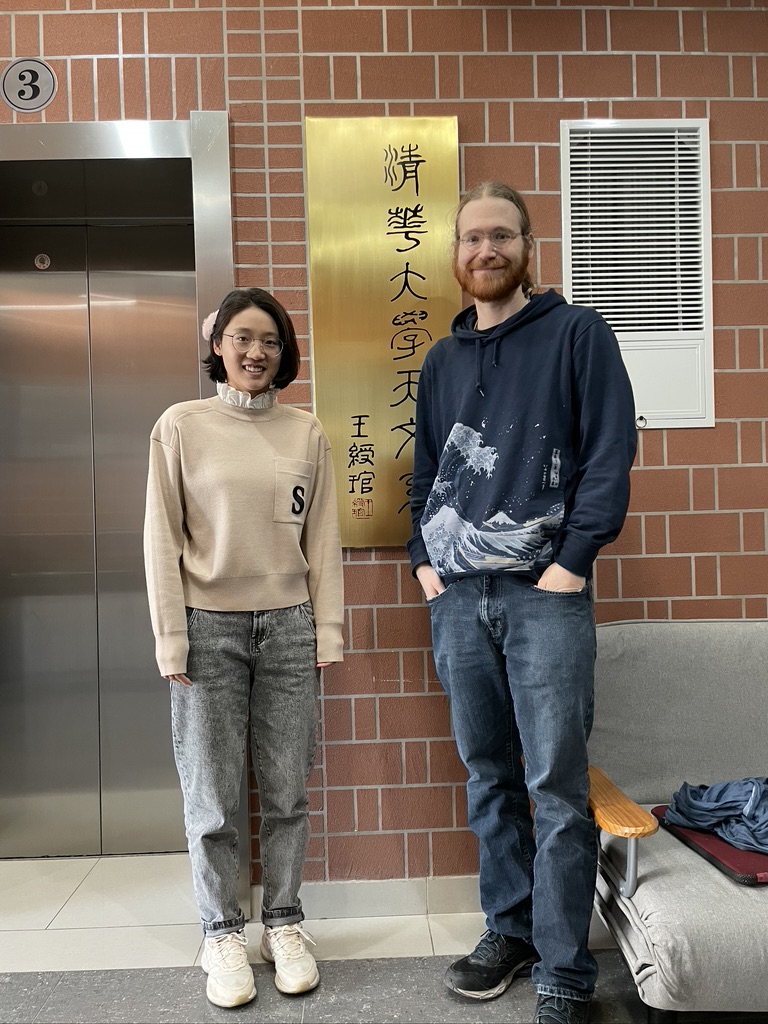
Although these are the three main projects I’m working on, I also have a number of long term projects in the works with both my brother and some other friends. One of the collaborations that I’m most excited about is called Extrac (ExtRAC – “Ext”ended “R”adio “A”GN in “C”lusters). It was facilitated by my good friend and fellow Astronomer Brian Lemaux, who realized that I was doing similar work to Emily Moravec (who I’d met at a Galaxy Cluster Conference in Sesto, Italy and who studies clusters in the MaDCoWS survey) and Lu Shen (who did her PhD with Brian and works on the ORELSE survey). Although we meet twice a month to discuss science, I’d never gotten to meet Lu. Lu is a postdoc at the University of Science and Technology here in China and her family is from Beijing, so I’ve been hoping to get to meet her in person after almost two years of collaborating. Well as you might guess by the picture above, Lu and her boyfriend Weida were able to come and visit Tsinghua’s campus a couple of weeks ago (For those of you wondering, the gold sign behind us says Department of Astronomy in Mandarin)! It was really great to meet her in person and discuss the various science projects I’m working on (including one that is still in the planning stages, but which I hope to collaborate with Lu on extensively! I also got to show Lu and Weida around Tsinghua and Zheng (my supervisor) treated us all to lunch at one of the restaurants on campus (this is also when one of the graduate students was telling us about the campus). Although it was a brief visit, it was so great to actually see a familiar face here in China! I’m hoping to give a talk later in the academic year at USTC and plan to have Lu back again so that she can give a formal talk to the department as well!
Exploring Beijing
As I become more accustomed to life here in Beijing, I’ve gotten to do a little more exploration as I traveled to get my residence visa, go to the China Vegan Festival, and get my flu shot. I also got to get a better sense of the area surrounding Gulou when I walked over to register with the police station. Unlike in the US, where anyone can travel within the country with basically no restrictions, here in China, you are supposed to register with the local police anytime you go anywhere (i.e. if I go visit Jesse in Shanghai, I need to register with the police there. If you stay at a hotel, the hotel staff do this for you). When I moved in, I only had my temporary visa, so with my new visa, I had to go back to the station to re-register. This was definitely one of the most positive experiences I’ve had dealing with administrative things here in China. Unlike at the other police stations I’d been to, the female officer who took care of the paperwork spoke English (I probably got lucky here, but it was very nice for me). When she saw that I’m from New York, she mentioned that her son had just applied to Columbia University. Since that is my Dad’s Alma Mater, I made sure to praise Columbia and say how great New York is. She was also very impressed when I said that I work at Tsinghua (much like there is an admiration of the Ivy League in the US, people here in Beijing are always very proud of Tsinghua). Since she spoke English, I was also able to clarify that I don’t need to re-register when I return to Beijing from a trip unless I leave Mainland China.
In my adventures around Beijing, one of the things that I’m continuously struck by is the art in the subway stations. You can see flowers, ink brush style art, sculptures, and fun cartoon characters. In the album below, all of the silver/grey/metal scultptures are at the Qinghuadongluxikou subway station (the station nearest to Tsinghua) and depict typical university life. Also, the bottom cartoon characters are all found on the ceiling at the Olympic Green Subway station and I think are the mascots from the 2008 Summer Olympics.


























Beyond the subway stations, I’ve seen lots of other cool looking things, including walls of crane machine games, seas of bicycles, some very interesting looking statues and fountains, and some lovely flower displays. Although fall has certainly set in in Beijing, people still like to have nicely manicured flower displays. One of the coolest buildings that you’ll see in the many photos below is the China CCTV headquarters. As Ted told me, it’s commonly dubbed “The Pants Building” and I think it should be pretty obvious which one it is! The China Vegan Festival was right by that building and it makes for a lot of really cool photos.

















































As the sunset has been getting earlier and earlier, I want to note that the city looks really cool at night! Here are just a few pictures!







I also love that almost anywhere I walk there are what appear to be traditional Chinese lion statues and architecture. Some of them are huge (the first one was probably 20 ft tall), but others are much smaller and they are always pretty menacing.









I also saw some of my favorite things (giraffes, astronauts, and pandas)!






Animals of Beijing
As I was exploring Gulou, I was able to see a lot of cute dogs and cats. In particular this is the one neighborhood cat who’s been very friendly every time I’ve seen her. She comes right up to my door as if she owns the place and definitely didn’t want me to leave to go for my run. I’ve also run across a number of neighborhood dogs as well as two different areas with pets up for adoption (including at the Vegan Festival). Although I don’t plan to adopt a cat while I’m here, they are very cute!





























Jewish Life
Although there weren’t any major Jewish Holidays in October, I did attend Shabbat services at Roberta & Ted’s home every week. I really am quite fond of the community, but I also love that it’s at their home as it feels much homier and I think makes it feel more like a community than if we were in a random rental space. One of the added bonuses is that since Ted is in charge of the Shabbat meal, he likes to have fun with it. As such, each Shabbat has a theme. This months themes were Chinese National Day Shabbat, Hot Pot Shabbat, Indian Shabbat, Oktoberfest Shabbat, and “Challah”ween Shabbat. Every week Roberta makes delicious homemade challah (she’s been experimenting with different flavors and we even had sauerkraut challah for Oktoberfest Shabbat) and Ted creates a menu surrounding the theme. The food and conversation are always great and it’s great to meet familiar faces as well as a number of new people. You can definitely tell that China has very slowly started to re-open as there has been a small, but steady wave of people who are either returning after a long time away or are new to the community. This past week we welcomed five Jewish Schwarzman Scholars (it’s a prestigious International Relations/Global Affairs Masters Program at Tsinghua) to Shabbat, which was incredibly exciting for me as it was really nice to meet some other Westerners on Tsinghua’s campus!
Here are a few pictures from Hot Pot Shabbat and “Challah”ween Shabbat. For those of you who aren’t familiar with Hot Pot, it’s kind of like a build your own soup, where generally people will share a communal soup pot and you add veggies (and traditionally meats, but here everything is vegetarian) to a broth to be cooked. Although the food is always themed, we definitely went all out on the aesthetics for “Challah”ween!







More Vegan Food!!!
Although I thoroughly enjoyed the China Vegan Festival, it didn’t prevent me from enjoying some other delicious food. As I mentioned, when Lu and Weida visited Tsinghua, Zheng took most of the group (about 10 people) to lunch at one of the restaurants on campus. Now, unlike me, Zheng is not a vegetarian, so I was left a bit in a lurch when he ordered for the entire table. When the food started arriving, I asked Lu which were vegetarian and when the answer was not much, thankfully Zheng was able to order some additional veggie dishes (okra, tofu skins, greens, & bok choy and mushrooms). I will say, it was fun explaining to Zheng what I do and don’t eat. No shrimp, chicken, chicken soup, … I’ve now since realized that it’s probably easier to tell someone that I’d eat what a Buddhist would eat.




I also ventured to another Vegetarian restaurant here in Beijing and had a delicious meal. Since I wasn’t able to celebrate my Mother’s birthday with her in person, she asked that I get a delicious meal in her honor and this meal didn’t disappoint! I got a yummy mushroom dish, tofu skins, veggie beef, and sword beans. I think the tofu skins were my favorite, but the mushrooms were a close second (I guess this is becoming a pattern with my favorite dishes)! I really don’t understand why tofu skins aren’t readily available in the US as their delicious! This restaurant also had a large vegan grocery store below it full of a wide array of frozen vegan meats. I was able to get some vegan meatballs that I’m excited to try later this month.




I also got to see (and even eat for some of them) a number of Western-style baked goods. The cinnamon bun and PB chocolate chip cookie (both delicious) are from “The Bake Shop” a very cute small cafe that one of my friends from Kehillat introduced me to! It’s about a 10 minute walk from my apartment and I’ve been told that it has the best bread in Beijing, so I’ll be back to buy a loaf the next time I need one. I also made my own vegan PB cookies (right panel) so that I have something sweet to snack on in my apartment!




I also found a place that sells local made and locally sourced vegan chocolate!!! And I got to try a traditional Chinese sweet or hard sugar covered strawberries. I think this is the Chinese equivalent of fair food/chocolate covered strawberries. Other than the sugar being a bit hard to bite through (kind of like a lollipop), it was quite a treat!




East Meets West
Like l mentioned last month, going to the foreign import grocery store is part of my weekly routine. I basically treat them as a secondary grocery store for getting packaged foods that I miss from the US or need in various recipes. As you can see, you can definitely get a lot of US (but also German, French, and British brands) if you know where to look.




















As I’ve mentioned before, Disney (and other US cartoons) seem to be very popular here, so it shouldn’t be surprising that I’ve also seen a lot of Mickey!











I’ve also seen some more traditional US companies and movies (although I’m not sure if I’ll get to see Dune in theatres, I’m excited that it did make it here to China – it gives me some hope that The Batman will open here next spring) and even a few more surprising things! I found a Sgt. Peppers sign at a record shop (ok, not so surprising) and a kid in a Kobe Bryant jersey (basketball remains really popular here), but a James Joyce named coffee shop seems pretty unusual for China. I think the most surprising this I’ve seen in regards to the west is definitely the Avril Lavigne branded iced tea! It’s not the early 2000s, so I was pretty shocked to see that one.










Anime & Comics
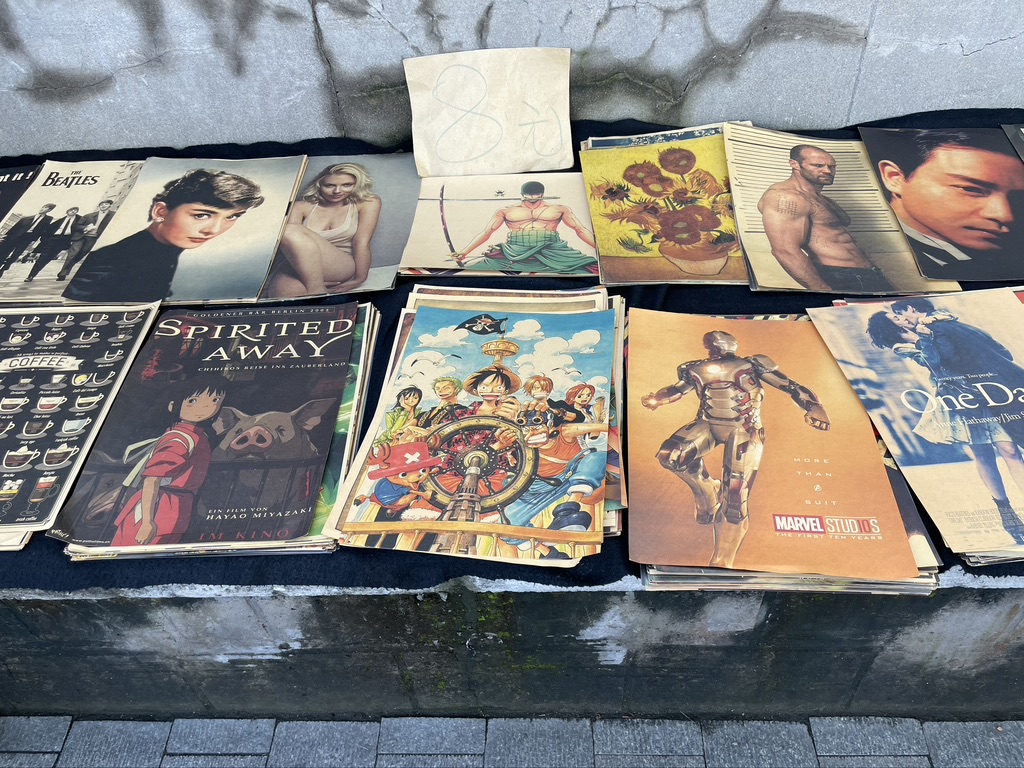
As I’ve discussed before, I’m always on the lookout for all things manga, anime, and comics when I’m exploring Beijing. Here are just some of the anime and manga things I saw this month. Although statues feature heavily, you’ll also notice that I found a lot of anime in the wild (meaning in/on cars and motorcycles and even at the foreign import store – and this time, I bought all four Dragon Ball Z sodas!). You can also see how manga-style art is used to advertise restaurants here in Beijing.







































Like with the manga and anime stuff, I found lots of comic book related sculptures (yes those are Batman, Captain America, and Iron Man drawing mannequins from IKEA) as well as some in the wild (and even a guy in a Spiderman suit). Regardless of if it is Marvel or DC, it’s great to see some of my favorite characters here in China!






























If you’ve made it all the way to the end of the blog, thank you so much for reading!! I really hope that you liked the visual exploration of Beijing and getting to see all of the sights of Gulou, Tsinghua, and the China Vegan Festival! We’re now up to real time, so while I don’t know what the next month will bring, I’m sure there are lots of fun and exciting adventures on the horizons, so I hope you’ll stick around and enjoy them! I’m planning on posting around the beginning of every month (either right before or right after the 1st, it’ll depend on when the weekend is). If you haven’t subscribed yet and are interested in getting notified when I post new blogs, please click the subscribe button on the right. Thanks again for reading my blog!
In Peace,
Emmet



































































































































